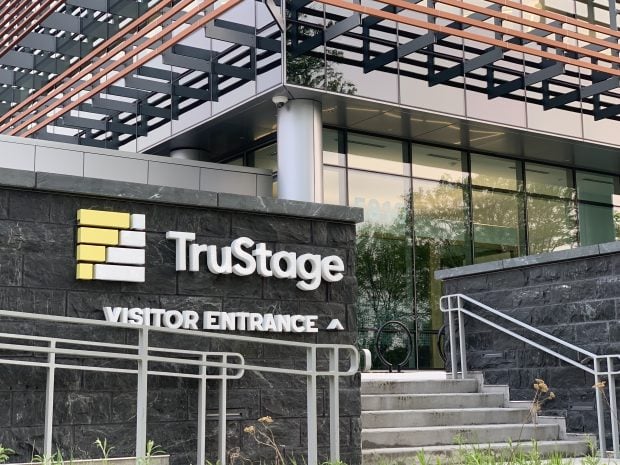ANCHORAGE, Alaska – Financial institutions, including credit unions, may soon be mentally filing AED in their lists of acronyms between ACH and ATM. Automated external defibrillators, or AEDs, are designed to help laymen save lives in case of sudden cardiac arrest. They're equipped with instructions and voice prompts to lead those on the scene through every step until professional first responders arrive. AEDs can be used to treat sudden cardiac arrest, which claims 340,000 lives a year. Experts say fewer than 5% of sudden cardiac arrest victims survive. For each minute that passes before defibrillation therapy is applied, survival chances decrease about 10%. After 10 minutes, few attempts at resuscitation succeed. The devices are appearing on airplanes, in stadiums, senior citizen housing complexes and other sites. Recently Alaska USA Federal Credit Union purchased 55 AEDs, at least one for every branch and administrative office. Nancy Bear Usera, Alaska USA FCU spokesperson, says the credit union feels it is important management personnel be trained to handle emergencies that might occur in those facilities. For example, all senior managers are required to be CPR certified. “While CPR is a great second choice, AED is the best hope of getting someone stabilized,” Usera notes. “Like any other purchase, you need to do your due diligence to make certain the company is going to be able to provide you with what you need when you need it and the quality you require. “There is no question this is not something that was done lightly. It takes a commitment, not only to having them but making sure the AEDs are properly maintained and people are trained. People have to know not only how to use the equipment, but how to respond in a more global way.” Tracy Byers, director of business development at Royal Philips Electronics, underscores Usera's emphasis on training. Phillips makes the HeartStart OnSite Defibrillator purchased by Alaska USA FCU. “One of the challenges in using new technology like defibrillators in the workplace is there are a lot of question of questions about how to do a program to protect employees and members in case of sudden cardiac arrest,” Byers says. “But beyond that, how do I know where to put them? How do I know how many I need?” The American Heart Association recommends a victim of sudden cardiac arrest receive defibrillation within three to five minutes. So the number and location depends not on the number of people in the workplace, but the size of the workplace. How long does it take to get an AED to the victim? It's been called the “drop-to-shock” time. AHA guidelines point to lobbies and main hallways as good locations. You probably want to forget about sticking one in a remote storeroom or basement. A study by the University of Iowa and the University of Michigan Health System also looked at defibrillators in the workplace. Researchers identified three crucial factors that should drive where a defibrillator is placed: how many people are at the site, how long are they there, and are they at risk for having cardiac arrest. For a credit union, that suggests a busy branch serving a high percentage of older members would be first choice as a defibrillator site. A student-run branch at a school wouldn't rank very high, even though New York State is mandating defibrillators in public schools. The Iowa/Michigan study questions that location, suggesting defibrillators are a good investment if the specific site is expected to have at least one cardiac arrest every seven years. Otherwise the money, investigators say, would be better spent on improving local EMS services. Another question, “How do I go about training?” So in addition to the AEDs themselves, Philips offers support that includes planning and training, with consulting to select the number and location of defibrillators. Training covers policies and procedures, such as who calls 911. Does the credit union have a current medical emergency response team in place, or will it rely on the general work population? What signs might be needed directing people to an AED? Philips partners with the American Heart Association and the American Red Cross to provide training, or can arrange a train-the-trainer program. Even though the AED devices are designed to provide voice prompts all the way through the process, training builds confidence and cuts vital response time. Software is available to track all the maintenance components such as periodic replacement of defibrillator pads and batteries, and when training should be refreshed. List price for the most popular Philips HeartStart AED is $1,195. Additional costs depend on the extent of the support package needed such as the number of software maintenance programs and the training program. “It's a great signal to the community you are taking care of members and employees,” Byers says. “More and more small businesses are putting these in place not only for their own use, but as part of a larger community defibrillation program. It's a good benefit to employees and an increasingly important aspect of providing medical care.” -
© 2025 ALM Global, LLC, All Rights Reserved. Request academic re-use from www.copyright.com. All other uses, submit a request to [email protected]. For more information visit Asset & Logo Licensing.







